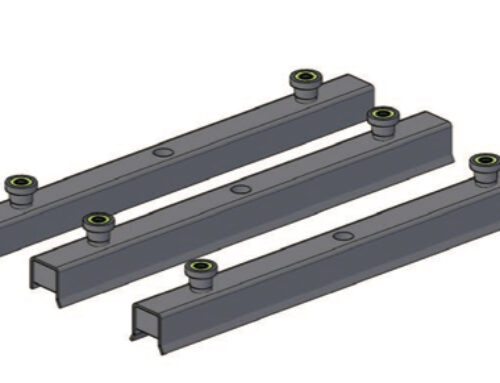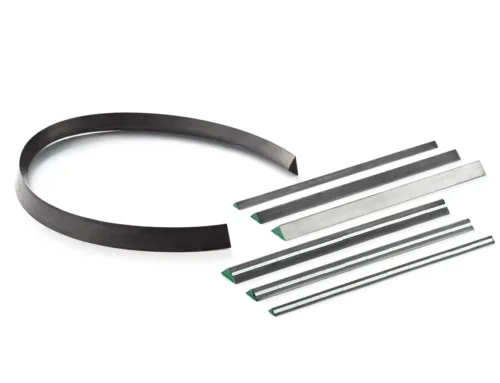If you’re a magnet supplier or manufacturer, you’ve probably faced the headache of incomplete or missing magnet MSDS during shipments—and the costly delays that follow. But here’s the truth: creating a compliant, detailed Material Safety Data Sheet (MSDS) for your permanent magnets like NdFeB or SmCo isn’t as complicated as it seems. This guide will walk you through how to make an MSDS tailored specifically for magnets, covering everything from handling risks to transport regulations. Ready to get your safety documentation right and keep your shipments smooth? Let’s dive into the essentials of making your own magnet MSDS today.
Understanding Magnet-Specific Hazards
When creating a magnet MSDS (Material Safety Data Sheet), it’s crucial to understand the unique hazards that magnets pose. These hazards generally fall into four key categories:
- Physical Hazards: Strong magnets like neodymium or samarium-cobalt (SmCo) can cause serious injury due to powerful magnetic forces. Crushing, pinching, or impact injuries are common risks during handling or assembly.
- Health Hazards: Some magnetic materials, such as NdFeB (neodymium-iron-boron), may produce dust or fumes during manufacturing or disposal. Exposure to this dust can irritate the respiratory system or cause long-term health issues.
- Fire and Explosion Hazards: While most magnets are not flammable, certain rare earth magnets can ignite if they come into contact with fire or sparks, especially when in powdered form. Proper storage and handling reduce these risks.
- Environmental Hazards: Disposal of rare earth magnets requires attention to environmental regulations. Improper disposal can lead to contamination due to heavy metals or chemicals used during magnet production.
Compliance with GHS (Globally Harmonized System) and regional safety standards like OSHA in the U.S. or ECHA in Europe ensures your MSDS covers these hazards clearly and accurately. This compliance not only supports workplace safety but also facilitates legal handling, transport, and disposal of magnetic materials.
Step-by-Step Process to Compile Your Magnet MSDS
Creating an effective magnet MSDS starts with a clear process. Here’s how you can break it down:
Step 1: Gather Material Data
Get detailed information about your magnets from suppliers—this includes chemical composition, physical properties, and any known hazards like NdFeB dust exposure risks. Always verify this data through lab tests or supplier certifications to ensure accuracy.
Step 2: Identify and Classify Hazards per GHS
Use the Globally Harmonized System (GHS) to categorize hazards. This includes physical dangers (like fire risks in ferrite magnets), health risks (such as exposure to rare earth magnet dust), and environmental impacts. Proper classification ensures compliance and clear communication.
Step 3: Fill SDS Sections 1–16
Complete every section thoroughly: from product identification (Section 1) to disposal guidelines (Section 13), and regulatory information (Section 15). Tailor each section with relevant details on permanent magnet SDS template standards, including handling precautions and emergency measures.
Step 4: Review and Certify Internally or Externally
Have your MSDS checked by qualified safety officers or external experts. This step guarantees the accuracy and compliance of your document before it reaches users.
Step 5: Digital Formatting and Multilingual Distribution
Format your MSDS for easy digital access, allowing smooth integration into supply chains. Provide translations based on your market needs, especially for international shipping and bilingual requirements. This supports global compliance and user safety.
Following this process will help you craft a reliable MSDS that covers all critical aspects of magnet safety, including GHS compliance for rare earth magnets and transport regulations. For more in-depth insight on magnet types and their specifics, consider reviewing resources on samarium cobalt vs neodymium magnets.
Essential Tools and Templates for Efficient MSDS Creation
Creating a magnet MSDS can feel overwhelming, but using the right tools and templates makes the process smoother and more accurate. Here are some essentials that can help:
- Free Resources and Templates: OSHA and ECHA provide standardized SDS templates that are easy to customize for magnets, including permanent magnets like Neodymium and SmCo. These resources cover all 16 standard sections and ensure you meet GHS compliance for rare earth magnets.
- Software for Automation: For startups or businesses handling multiple magnet types, software like ChemGes, SDS Authoring Tool, or open-source options can automate hazard classification and SDS formatting. These save time and reduce errors in generating safety data sheets.
- Common Pitfalls to Avoid:
- Skipping verification of supplier data
- Overgeneralizing hazards without magnet-specific details (like NdFeB dust exposure risks)
- Ignoring regional transport regulations for magnetic materials
- Not updating SDSs regularly, which risks non-compliance
- Customization Tips:
- Highlight unique hazards such as ferrite magnet fire safety or rare earth magnet disposal guidelines
- Align your MSDS with your supply chain’s documentation requirements
- If your magnets require export, use bilingual SDS versions to cover international shipping needs
Using reliable templates combined with automation tools will help you create a professional magnet MSDS that checks all the boxes for safety and compliance.
Best Practices for Magnet Suppliers
To stay ahead in magnet supply, integrating thorough training programs around magnet handling hazards is essential. Regular hazard simulations help teams recognize risks like NdFeB dust exposure and potential fire threats, especially with ferrite magnet fire safety concerns.
Aligning your entire supply chain with up-to-date MSDS requirements ensures everyone—from manufacturers to distributors—follows the same safety standards. This makes auditing smoother and supports compliance with regulations including GHS compliance for rare earth magnets.
Export readiness is another critical area. Case studies show that preparing magnet MSDS in multiple languages and formats avoids delays and customs issues, helping your products reach international markets faster.
Lastly, adopting sustainable practices benefits both the environment and your reputation. Follow rare earth magnet disposal guidelines to handle waste responsibly, and consider eco-friendly packaging options. This approach meets both regulatory demands and growing customer expectations for green solutions.
For a deeper understanding of magnet properties that impact safety and handling, check out how a rare earth magnet functions in different environments.
Frequently Asked Questions on Magnet MSDS
| Question | Answer |
|---|---|
| What is the difference between MSDS and SDS for magnets? | MSDS is the old format; SDS follows the new GHS standard with 16 clear sections for better hazard communication. SDS is now the global norm. |
| How often should SDS for magnets be updated? | SDS must be reviewed and updated whenever new hazard info arises or every 3-5 years to stay compliant with regulations. |
| Are flexible magnets exempt from MSDS/SDS requirements? | Some flexible magnets with low hazard profiles may be exempt, but check regional rules carefully before skipping SDS preparation. |
| Where can I find sample SDS templates for magnets? | Industry groups and suppliers often offer sample SDS templates for common magnets like neodymium or ferrite, useful for your reference. |
| Do I need bilingual SDS for international shipment? | Yes, international shipping usually requires SDS in at least two languages to meet customs and safety regulations worldwide. |
Please contact us to get MSDS reports for different magnets.





Leave A Comment